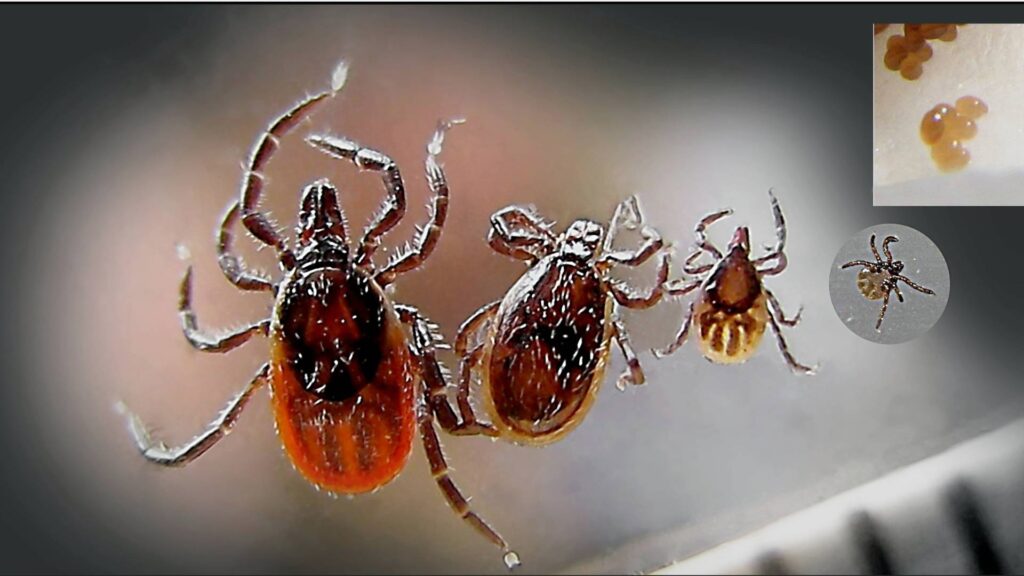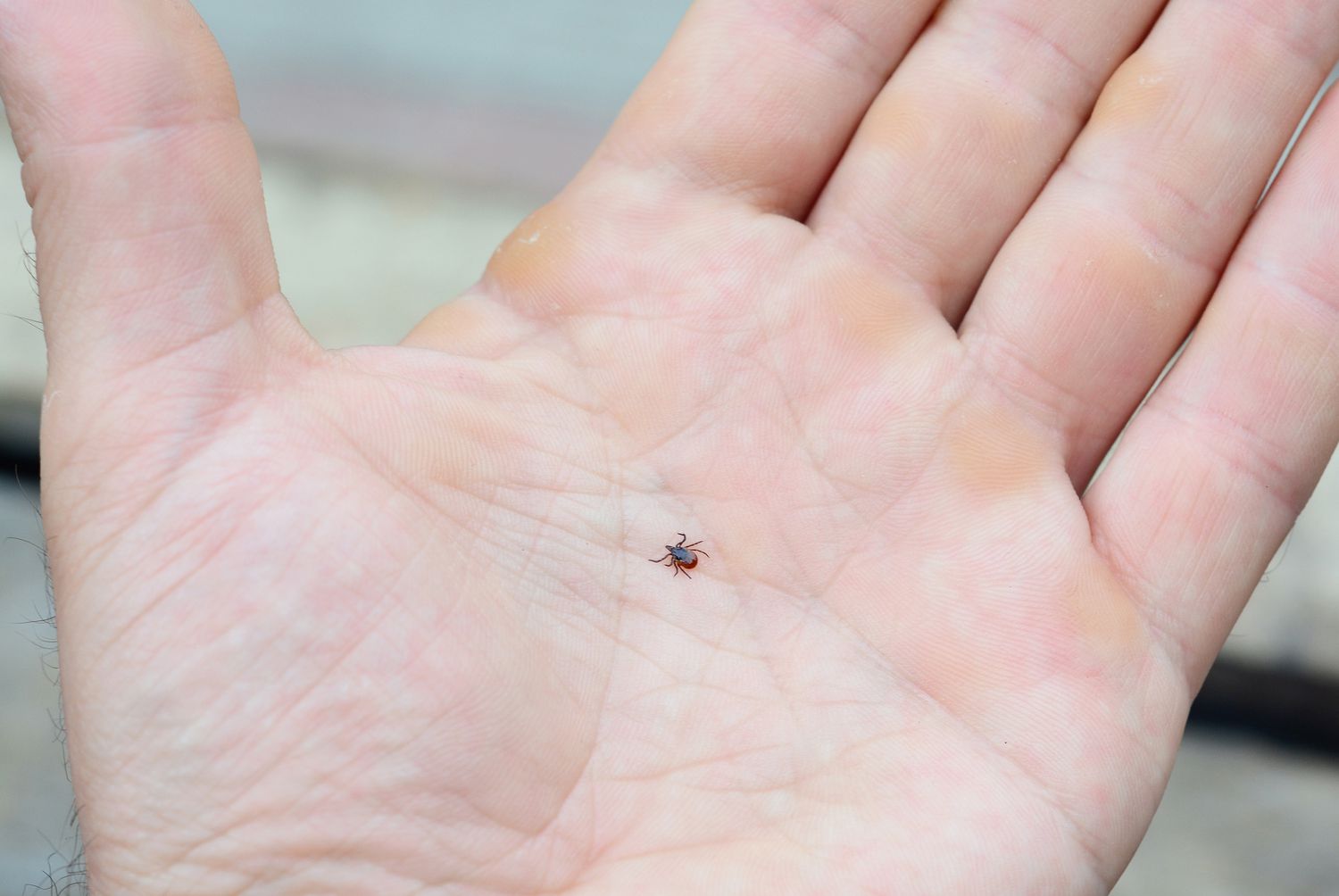Tick Removal Services in Frisco
Pest Control Xperts delivers comprehensive tick removal for homes, businesses , veterinary clinics and public venues throughout Frisco. Ticks are more than annoying parasites. They occasionally transmit illnesses such as Lyme disease ehrlichiosis and Rocky Mountain spotted fever. North Texas presents the warmth and humidity ticks need to flourish for much of the year. If you have noticed ticks on pets after a walk at Frisco Commons or found one crawling on a couch after a family trip to Lake Lewisville it is time to address the problem before populations expand. Our experienced exterminator team inspects every hiding place, applies targeted treatments indoors and outdoors and provides practical guidance so residents of Frisco, Aubrey, Little Elm, Prosper, and The Colony can enjoy yards, patios and green‑belts without worry.
Why Ticks Thrive in North Texas
Frisco stands roughly midway between the Red River and the Gulf Coast. Warm moist air moves north from the Gulf every spring lifting nighttime lows above sixty degrees by late April. These conditions awaken overwintering tick nymphs hidden under leaf litter and mulch beds. Summer temperatures in the upper nineties do not slow ticks that find shade under dense turf and irrigated shrubs. Short mild winters rarely stay below freezing long enough to interrupt life cycles so a small group can remain active under tree bark or inside attic insulation even in January.
Rain patterns also feed local tick surges. Thunderstorms saturate lawns and retention ponds throughout Frisco Station and Stonebriar Centre. Soaked soil lures wildlife such as rabbits, field mice and feral cats that carry ticks into backyards. Along Lake Lewisville cool breezes prevent soil from drying fully ensuring steady moisture around dock pilings and beach paths. Pockets of humidity inside large green spaces like the PGA golf campus in Prosper and the wooded corridors in The Colony give adult ticks safe havens until pets or hikers pass by.

High Risk Locations in Frisco and Nearby Communities
Frisco
Neighborhood parks including Warren Sports Complex and Harold Bacchus boast walking trails shaded by oak and pecan trees. Ticks perch on tall fescue or low hanging branches then transfer onto joggers or strollers pushing pets. Large fenced yards in Phillips Creek Ranch feature thick Saint Augustine turf irrigated nightly which stays cool enough for ticks through August. Dog‑friendly retail areas around The Star draw patrons and their pets giving ticks fresh hosts that ride home on collars and leashes.
Aubrey
Horse ranches line Highway 377. Equines attract lone star and American dog ticks which feed on horses in pastures then drop larvae into straw bedding. Barn cats nap on tack trunks bringing ticks from stalls to human traffic zones.
Little Elm
Lakefront neighborhoods near Little Elm Park sit mere yards from riparian habitat filled with deer and armadillos. These mammals host blacklegged ticks which can hitch a ride onto boating gear, fishing chairs and picnic blankets.
Prosper
Rapid development adds groomed lawns and artificial ponds to subdivisions along East First Street. Irrigation blended with native mesquite thickets forms mixed moisture areas perfect for brown dog tick colonies that sneak indoors on pets and nest inside laundry rooms or attic ductwork.
The Colony
Grandscape entertainment district hosts concerts and restaurant patios until late evening. Between performances feral cats and opossums forage for discarded food leaving behind ticks that seek humans waiting in line. Shoreline trails at Stewart Creek Park present dense underbrush where hikers often return with embedded nymphs behind knees or under shirt collars.
Understanding the Tick Life Cycle
Egg
After a blood meal a female deposits thousands of eggs into leaf litter. Warm soil and humidity trigger hatching within a few weeks.
Larva
Six‑legged larvae feed briefly on small hosts like mice then drop into grass to molt. Larvae are minuscule and easily missed during pet grooming.
Nymph
Eight‑legged nymphs seek larger hosts including dogs, cats and people. Infected nymphs pose the greatest disease risk because they go unnoticed for longer periods.
Adult
Adults climb taller vegetation and wait for deer livestock or people walking near shrub lines. Females require a final meal before laying eggs and repeating the cycle.
Breaking each stage demands persistent treatment inside and outside the structure because eggs resist many contact insecticides.

Health Concerns Linked to Ticks
- Potential disease transmission can occur if infected ticks feed for more than twenty four hours.
- Itching and skin irritation develop around bite sites creating risk of secondary infection when scratched.
- Stress and sleep loss arise when family members constantly check linens, pets and carpets for crawling parasites.
Proactive professional tick removal limits these hazards and returns calm to busy households.
Pest Control Xperts Tick Removal Process
- Detailed Inspection
Our technicians inspect baseboards, window trim and pet sleeping areas for stray ticks or egg clusters. Outdoors we survey mulch beds, fence lines, deck undersides and shaded corners where moisture lingers. We record wildlife activity stepping stones and irrigation zones because each factor shapes treatment.
- Species Identification
Most cases involve American dog ticks, lone star ticks or brown dog ticks. Identifying species informs product choice and retreat intervals because each has unique host preferences and seasonal peaks.
- Customized Treatment Plan
- Interior applications of insect growth regulators mix with micro‑encapsulated adulticides along carpet edges cracks and behind appliances.
- Targeted steam penetrates fabric seams of sofas and dog beds destroying hidden eggs without chemicals.
- Exterior barrier spray circles the foundation extending three feet up walls and three feet into the lawn. Our formulas bind to organic matter resisting rain yet staying safe for post‑treatment foot traffic after drying.
- Granular insecticidal bait spread beneath shrubs and around property lines knocks down larvae and nymphs hiding in thatch.
- Wildlife deterrent tips reduce rodent and deer presence. We may install one‑way exit doors on crawl vents or suggest fencing adjustments to limit opossum travel.
- Client Preparation
Before service we email a checklist:
- Vacuum carpets upholstered furniture and vehicle seats that transport pets.
- Wash all pet bedding towels and throw blankets on a hot cycle and dry at the highest temperature.
- Mow and edge lawn to four inches or shorter.
- Rake leaves and bag them for curb removal.
- Remove toys, dishes and grill covers from patio seating areas.
- Follow‑Up Monitoring
We place tick drag cloth monitors in shaded lawn corners. At a two week follow up we count any trapped ticks. If numbers exceed the threshold we apply supplemental spot treatments free within the thirty day service window. Quarterly or biannual plans maintain low pressure during spring and fall surges.

Service Features by Community
Frisco – Townhomes near Frisco Station benefit from monthly perimeter spray and common turf granular treatments around dog walk stations. Condo boards receive digital activity maps for resident updates.
Aubrey – Barn packages include stall dusting safe for equines plus perimeter bait to protect feed storage. We teach stable staff how to rotate fly sheets and grooming schedules to spot ticks early.
Little Elm – Lake vacation homes gain crawl space barrier installation and deck sprayer applications scheduled between weekend guest stays to preserve rental income.
Prosper – New construction owners select pre‑move‑in carpet steam and foundation barrier to prevent brown dog ticks from establishing within attics during the final building phase.
The Colony – Retail patios at Grandscape receive late night power‑mist treatments so diners never see service in progress. Nearby apartment complexes opt for stairwell crack sealing that halts tick movement between units.
Why Choose Pest Control Xperts
- Local expertise ensures treatments account for Blackland clay soil water retention and regional wildlife corridors.
- Integrated approach combines chemical physical and cultural controls for full life cycle interruption.
- Transparent reporting provides photos of hotspots product labels and safety guidelines after each visit.
- Flexible scheduling offers sunrise and sunset appointments to reduce downtime for pet day spas and outdoor entertainment venues.
- Long term plans keep tick pressure low through proactive seasonal barriers rather than wait for reinfestation.
Everyday Measures to Deter Ticks
- Keep grass trimmed and edging clean around playground equipment.
- Replace dense foundation shrubs with airy ornamental grasses that permit sunlight to reach soil.
- Move wood piles at least twenty feet from exterior walls and elevate on metal racks.
- Inspect pets daily after park visits, especially ears, neck and between toes.
- Use veterinarian approved collars or oral tick preventives year round.
- Switch porch bulbs to warm spectrum LEDs which attract fewer flying insects that serve as tick hosts.
- Secure trash lids to deter possums raccoons and stray cats.
- Seal crawl space vents with quarter inch hardware cloth to block rodents.
- Encourage children to leave outdoor sports gear in designated bins rather than bedroom floors.
- Schedule a professional exterior inspection each spring before soil temperatures exceed seventy degrees.
Combining these habits with professional service greatly lowers tick populations and disease risk.
Contact us Today
Do not allow hidden ticks to jeopardize family comfort or business reputation. Pest Control Xperts offers thorough tick removal across Frisco, Aubrey, Little Elm, Prosper, and The Colony. Our exterminator team pinpoints breeding zones, applies effective treatments and guides you through moisture and habitat adjustments that deter future infestations. Contact us Today to schedule a full property assessment or enroll in an ongoing maintenance program. Secure your home yard or commercial setting against North Texas tick challenges and enjoy the outdoors with confidence every season of the year.
